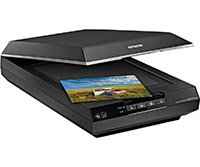Digitizing analog images: Considerations and advice for how to make scans without breaking the bank
posted Friday, February 3, 2017 at 3:00 PM EDT

Many photographers still enjoy the thrill of shooting film, but it's important to be able to digitize your analog images not only to preserve them, but to be able to quickly share them. There are numerous methods you can utilize to make your film photos into digital files and Torsten Kathke has written an excellent guide covering the various options film photographers have at their disposal.
Your first, and most convenient, option is to have a lab scan your film. Kathke notes that this can be expensive if you want a good quality scan. For the best results, you will want to hand your film over to a high-end lab. For American readers, Kathke recommends Old School Photo Lab, The Darkroom and The Little Film Lab.
If you want to handle scanning yourself, you have a wide variety of options running the gamut from quick, easy and cheap to very expensive. You can utilize a smartphone scanning app if you don't care as much about quality, for example. For more discerning shutterbugs, you can step up to an Epson V600 or V800 scanner or a Canon Canoscan 9000F, which cost between $180 and $700. What if quality is your ultimate concern and cost is no issue? Have a look at the Hasselblad Flextight X5 scanner, which costs nearly US$26,000.
If you have a DSLR camera and a macro lens, you can even scan film by taking photos. In the tutorial below, Edgar from Photos in Color uses a DSLR, macro lens, piece of glass, a tablet (or smartphone) and piece of white plastic to capture detailed images of slides.
To learn more about scanning film, read the full article at Fstoppers. Readers, what are your methods for digitizing your analog images? Let us know in the comments below.
(Seen via Fstoppers)